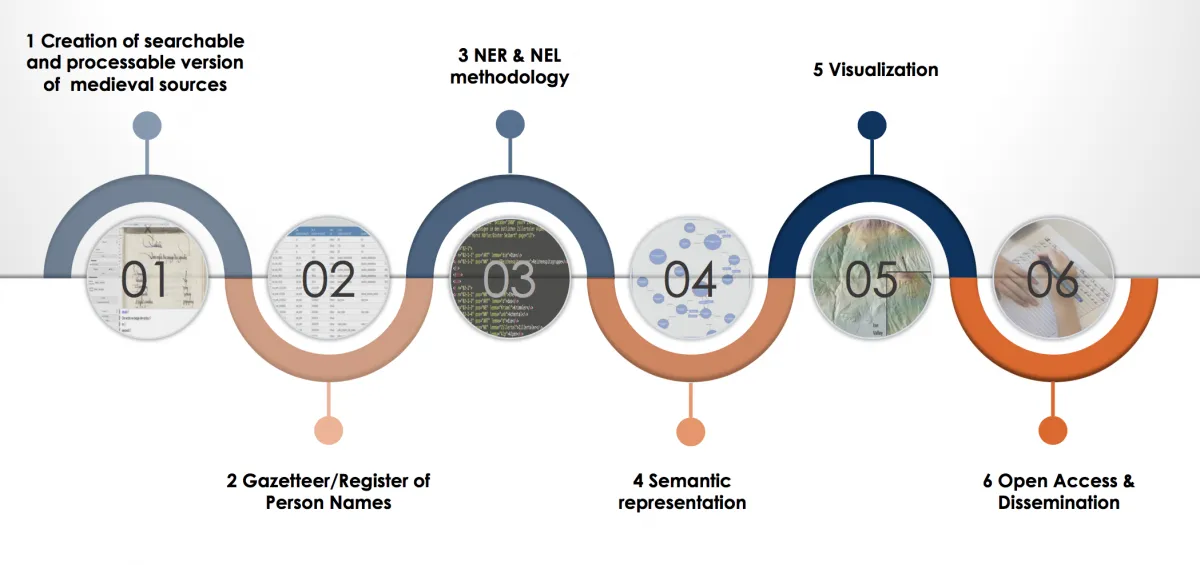
Text Mining Medieval Mining Texts (TMMMT)
- Hosting organisations
- Uni Innsbruck - Sprachwissenschaft and Uni Innsbruck - Arbeitsbereich für Vermessung und GEOinformation
- Responsible persons
- Elisabeth Gruber-Tokić, Gerald Hiebel, and Bettina Larl
- Start
- End
The main objective of the research project is the extraction of information related to the legal relationships between people, claims, mines and the localization of the mines in the landscape. The central link to represent the relationships between people, pits and localization are names: names of places, people, tunnels, shafts and mining areas within the historical sources allow the representation of mutual relationships.
The extracted information will be converted in a semantic machine readable format (RDF) that allows the representation of the researched entities (places, people, claims) and their relations in a knowledge graph. The visualisation of the spatial and temporal development of a mining district almost 600 years ago will be realised with geoinformation systems.
A major task is the creation of a searchable, further processable version of the medieval and handwritten documents “Verleihbuch der Rattenberger Bergrichter” (Hs. 37) and “Schwazer Berglehenbuch” (Cod. 1587). Both historical sources are currently stored by the Tyrolean Regional Archives (TLA) in Innsbruck, Austria. The handwritten medieval document Hs. 37 comprises precisely 347 pages and was written between 1460 and 1463. It contains the official claims to mine ores and minerals in the mining district of Rattenberg-Brixlegg (Tyrol, Austria). It also contains information about the timber industry and its connection to mining. The historical document “Schwazer Berglehenbuch” (Cod. 1587) comprises 408 pages was partly transcribed and published as scholarly edition by Wolfgang Tschan in 2009. Its content is similar to the content of Hs. 37 but it focuses on the mining district Falkenstein in Schwaz (Tyrol, Austria).
The process of linguistic annotation also includes the development of a suitable methodology for Named Entity Recognition and Named Entity Linking that can be applied to medieval sources. Therefore, it is necessary to create gazetteers containing historical German orthography for place names and personal names. This data is available from the principal investigator’s dissertation as well as from other already transcribed historical sources (Hs. 12) stored by TLA. Another source for personal names will be the dissertation of Yvonne Kathrein (2011) and its database. Sources for the localisation of mines will be historical maps and high resolution digital elevation models.
The planned scientific output is reflected in the corresponding packages of the workflow (see figure upwards).
- Digitized version of the medieval sources
- Gazetteer of historical mining places
- Methodology for Named Entity Recognition/Linking within historical documents
- Semantic representation in RDF
- Visualization of the temporal development of a mining district
Open access/online dissemination of the results 1-5